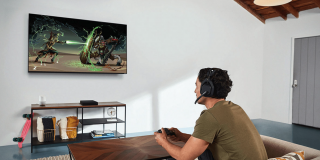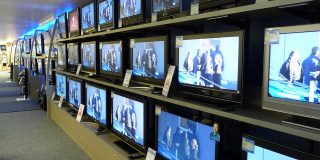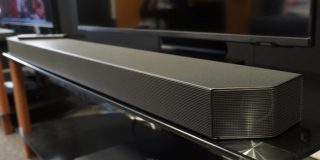How to Adjust the Settings for the Best Outdoor TV Viewing Experience
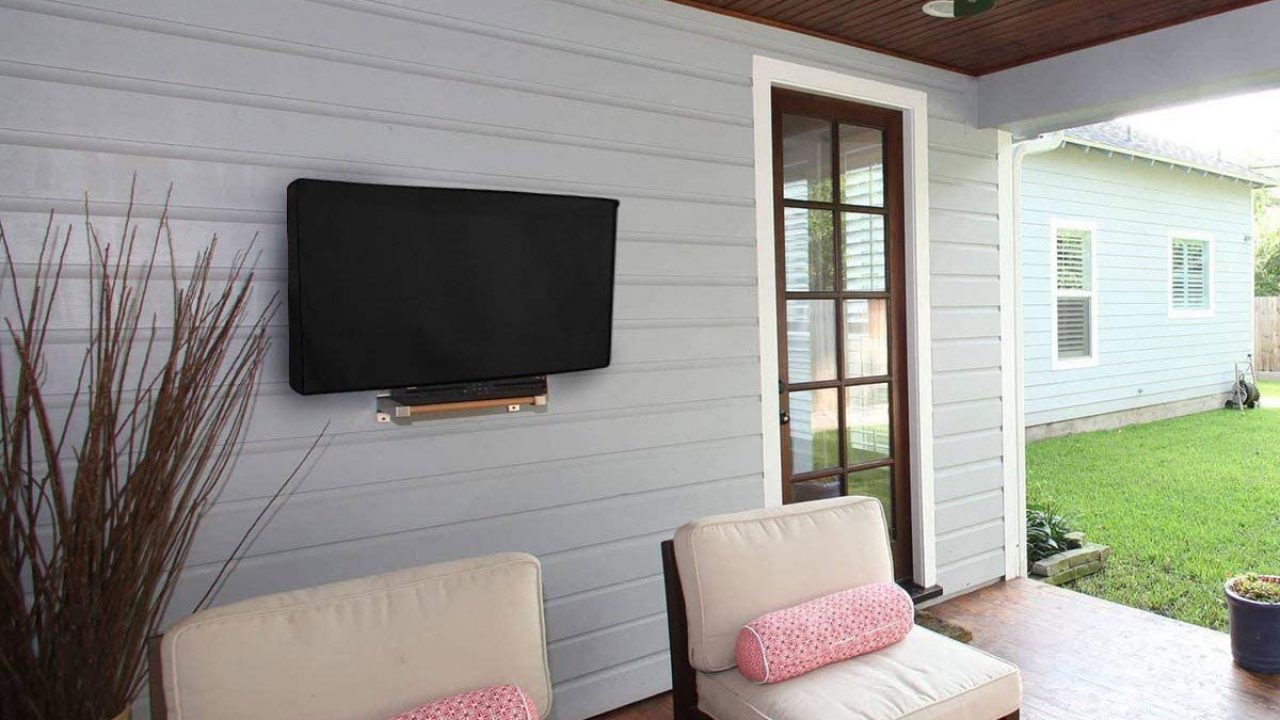
You’re all set up for the big event. Your guests have arrived, you have plenty of food and drinks laid out, and you’ve carted your TV outside, ready to watch a movie or the latest sporting occasion. You turn the TV on and settle in to watch.
Then, the sun hits your screen.
The glare from the sun makes the screen practically unseeable. You can barely make out anything on the TV as you struggle to find the perfect angle to keep the sun’s rays from bouncing off the screen. In the end, you give up and take the TV back inside.
But you don’t have to do that.
It is possible to create a satisfying outdoor TV viewing experience. You just need to know how to adjust your TV’s settings so that glare doesn’t have as much of an impact. This article offers some useful tips to help you do just that. But before that, you need to know why glare occurs in the first place.
Why Does Glare Happen?
Glare occurs whenever there is a light source that can “see” your TV. For example, placing a lamp in front of your TV leads to reflections or washed-out colors because the lamp shines a light on the screen. When you’re outside, the light bearing down on the screen creates a strong glare that makes it difficult to see.
Most high-definition or 4K TVs have glossy screens that essentially act like mirrors. Whenever any light shines on them, the light bounces toward the viewer’s eyes, which makes it difficult to see whatever is on the screen. Some TV manufacturers try to solve this issue by equipping their products with matte screens. Though this prevents mirror-like reflections, it’s still an imperfect solution. Matte screens spread the light around, which brightens the blacks and similar dark colors on the screen. This creates a washed-out look that isn’t ideal, especially if you’re watching something that uses a lot of dark colors.
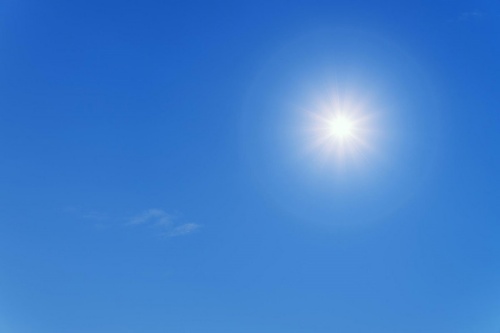
The Tips for Outdoor TV Settings
There are some practical solutions you can take to the glare issue when watching TV outside. Placing the TV under heavy shade can solve the problem, as can angling the TV away from the sun. However, both require you to make concessions. Placing a TV under shade often means that you need to share that shade, which eliminates some of the enjoyment of watching TV outdoors. Angling the TV away from the sun can create awkward viewing situations, especially if you have to turn the TV towards a fence or away from your sitting area.
Thankfully, you can make several adjustments to the settings of most modern TVs. These tips should improve your outdoor viewing experience.
Tip No. 1 – Increase the Backlight Settings
One of the best ways to combat glare is to fight brightness with brightness. However, the brightness setting on most TVs is not the way to do this. That sounds confusing, doesn’t it? The issue is that your TV’s brightness setting does not affect the light the device emits. Instead, it makes blacks and darker colors appear lighter than they normally are. This means the brightness setting actually creates a similar effect to having a matte screen. Blacks appear grey, but the issue of glare persists.
Rather than using the brightness setting, search for your TV’s backlight option. This setting brightens or dims the light behind the television display, resulting in higher or lower light output. When you’re outdoors, increasing the backlight creates a brighter screen that reduces the reflections glare causes.
Generally speaking, the backlight setting is found in your TV’s image settings. It’s usually in the same place where you can adjust brightness, contrast, and image sharpness.
Tip No. 2 – Know Your Nit Measurement
TV brightness is measured in nits. A nit is the amount of light a device’s screen emits per unit area. The higher the nit measurement, the brighter the screen. A single nit is equivalent to one candela per square meter.
This is important to know because most TVs have 200-to-300 nit screens as standard. Contrast that to smartphones, which typically range between 600 and 700, which is why they’re usually easier to see when outdoors.
Your TV’s nit measurement determines how bright you can make your screen. If it tops out at 300, even adjusting the backlight to its maximum setting may have little effect on glare. If you wish to watch TV outdoors regularly, make sure you have a TV that is capable of outputting approximately 600 nits.
The challenge here is that most manufacturers and retailers don’t directly advertise a TV’s nit count. Instead, they use the term “brighter”. Look for TVs that claim to be several times brighter than standard indoor TVs to ensure you’re getting a device with a high nit measurement.
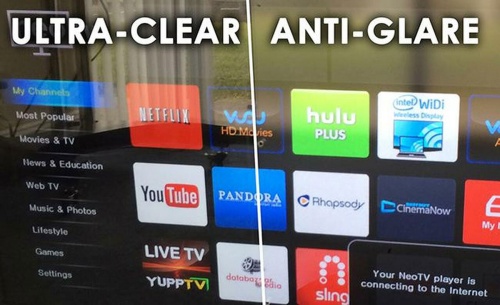
Tip No. 3 – Use an Anti-Glare Glass Overlay
Anti-glare overlays are tough safety glass screens that install directly over a TV’s standard LCD screen. In addition to guarding against glare, overlays protect the screen from scrapes, scratches, and smudges. You can also find anti-glare film that serves a similar purpose, though this does not come with the same screen protection properties.
Anti-glare screens work similarly to the matte screens mentioned earlier. They dissipate the light that shines on them, spreading it out to reduce reflections. However, this can also create a washed-out look. For example, this can happen if you get direct sunlight on the screen and the TV is pointed toward a dark wall.
As such, anti-glare screens work best when the TV is pointed toward a light-colored wall or surface. If that isn’t the case, a clear front panel is the better option.
Tip No. 4 – Keep the TV Low
Mounting your TV above your direct eye line leaves it more exposed to the open sky. You’ll likely find that you face the combined issue of glare caused by the sun’s rays and a reflection of the sky on the TV’s polycarbonate front shield.
Keeping the TV low reduces its exposure, lessening glare in the process. Combining this technique with increasing the backlight setting should eliminate most of the reflections you’re dealing with.
Tip No.5 – Choose the Best Sound Setting
Moving away from the screen, you also need to consider your TV’s sound settings. You’re not in an enclosed space when watching TV outdoors. Sound can travel up, leading to a loss of volume when you’re sitting away from the TV.
Turning the volume up can solve that problem. However, it can also lead to the sound becoming muddier or distorted. Plus, you need to be aware of other people. A loud TV outside could annoy neighbors. Thankfully, you can make more specific adjustments that lead to enhanced sound clarity without having to turn the volume up.
These adjustments vary depending on what you’re watching. Many TVs also have pre-sets available that give you optimal settings. You can usually find these pre-set options in your TV’s “Sound” or “Audio” menu. They typically include options like Movie, Standard, and Sport, with most TVs also allowing you to create your own custom settings.
Start by choosing the setting that most closely relates to the content you’re watching. From there, you can make adjustments to fine-tune the quality of the TV’s audio output. For example, if you find that the dialog seems muffled in a movie, you may be able to activate a News, Dialog, or Speech Boost mode on the TV. Increasing the treble may also help to improve speech clarity.
If you’re watching sports, the dialog is less of an issue. You’re likely more interested in the atmosphere and noise generated by the crowd. In these cases, turning on Bass Boost or activating the Surround setting produces a better result.
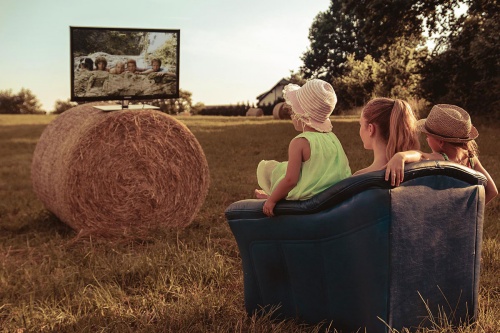
Choose the Right TV for the Job
The tips offered in this article help you to get a better viewing experience when watching TV outdoors. However, even with the settings adjustments suggested here, you may find you still struggle with glare, especially if your TV has a low nit measurement.
As such, the best option for watching TV outdoors is to buy a device that’s specifically made for the purpose. Look for marketing that suggests the TV has a much brighter display than normal. This suggests a high nit count, allowing you to use the device’s backlight to combat glare. Ideally, your outdoor TV will have some form of weatherproofing, such as protection against moisture and high temperatures.
Unfortunately, TVs made specifically for outdoor viewing also tend to come with higher price tags than those made for indoor viewing. Ultimately, you have to balance your needs with your decisions. If you intend to watch TV outdoors regularly, investing in an outdoor TV may be a better choice than fiddling with the settings of a regular TV.





